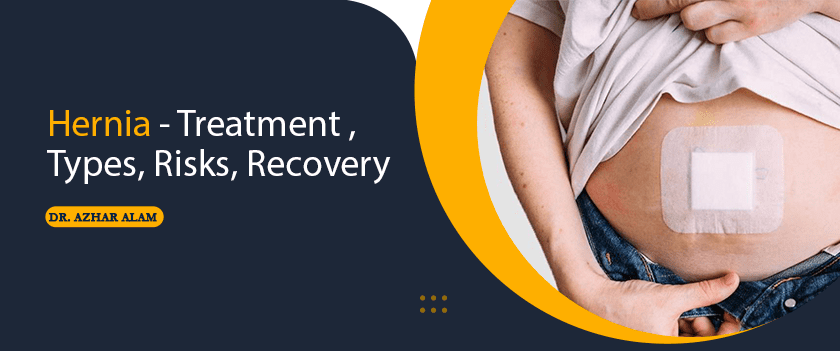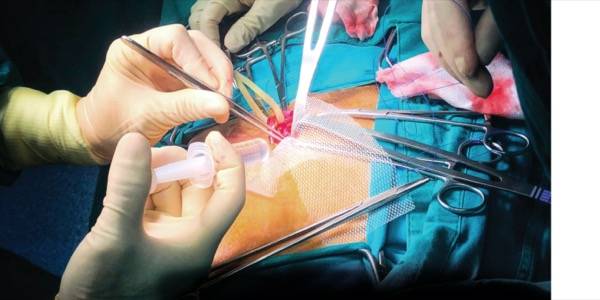

Hernia - Treatment, Types, risk, Recovery
Hernias are usually treated by surgery. The three primary kinds of hernia surgery include surgery that involves open or laparoscopic (minimally minimally invasive) repair and robotic repair. This article provides information on each of the procedures.
What is the treatment for a hernia?
Hernias are usually treated through surgery. There are three types of hernia surgery: laparoscopic hernia repair, open hernia repair, and robotic hernia repair.
What is the purpose of open hernia repair procedure?
Repair of an open hernia is when an cut, or an incision, is made inside the groin. A hernia “sac” which contains the intestine with bulges is found. The surgeon will then push the hernia back in the abdomen and reinforces the abdominal wall using stitches or mesh made of synthetic. The majority of patients are allowed to return home within just a few hours after surgery and will feel normal within a couple of days. The strenuous exercise and physical activity are not permitted for the first four to six weeks following the procedure.
Laparoscopic (minimally invasive) hernia repair surgery?

Laparoscopic (minimally surgically) hernia repair makes use of laparoscopes, which are a slim telescope-like instrument placed through a tiny incision around the umbilicus (belly button). The procedure is typically done under general anesthesia, which means that prior to the procedure you’ll undergo an assessment of your overall health condition, which includes physical examination, a history (and maybe lab work) as well as Electrocardiogram (EKG).
There is no discomfort during this procedure. The laparoscope is attached to a tiny camera, which is smaller than a dime. This camera project the “inside perspective” from your own body to screens inside the operating room.
The abdomen is filled by a non-toxic gas (carbon dioxide) creating the space for your doctor to examine the internal organs of your body. Peritoneum (the inner abdominal lining) is cut to reveal the weaknesses in the abdominal wall. Mesh is then placed in the middle to hide the flaws within the abdomen wall and help strengthen the tissues.
When the procedure is complete the incisions in the abdomen are closed using one or two stitches or by using surgical tape. In a couple of months, the incisions appear to be invisible.
The advantages of laparoscopic hernia surgery comprise three small scars instead of a single, larger cut there is less pain after surgery and a faster return to work, and a quicker recovery (days rather than weeks).
Also Read: Is Laparoscopic Surgery Safe?
What is the purpose of robotic hernia repair procedure?
Robotic hernia repair, similar to laparoscopic surgery, utilizes the laparoscope, and is carried out exactly the same way (small cuts, a tiny camera, and inflation of the abdomen, and projecting the abdomen’s insides to television screen).
Laparoscopic surgery differs from robotic procedure in that the surgeon sits at a console inside the operating room. He manages the surgical instruments via the console. While robotic surgery may be used to treat smaller hernias or areas that are weak but it is also able to be used for reconstructing abdominal walls.
One of the major difference between laparoscopic surgery as well as robotic surgery is the fact that the use of a robot can provide excellent 3D images of the abdomen’s inside (vs. those two-dimensional pictures of surgical laparoscopic procedures). Robotic surgery allows surgeons to utilize stitches to join tissues and meshes in the abdomen.
The other advantages of undergoing robotic hernia surgery is that the patient will have small scars instead of a large incision as well as less discomfort after the procedure in comparison to open surgeries.
Contact the Best Hernia Doctor in Kolkata for the Hernia Treatment.
About Docor

Dr. Azhar Alam
MBBS (Honours), MRCS A (UK),
DNB General Surgery
FIAGES (Gastro Intestinal Surgery)
FMAS (Minimal Access Surgery),
MNAMS (New Delhi)
Consultant Gastrointestinal, Advanced Laparoscopic and Laser Surgeon
Assistant Professor of Surgery, KPC Medical College and Hospital




